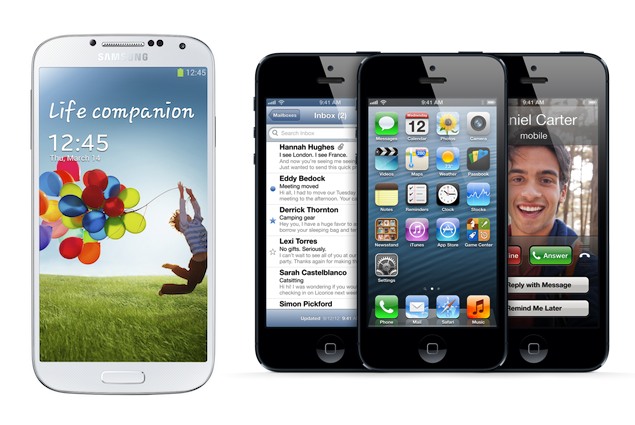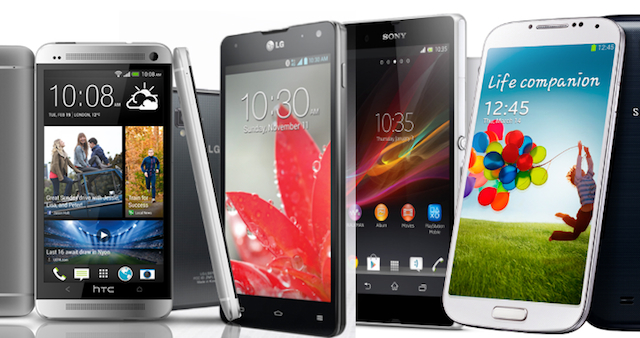
Ausdroid is well established as an Android news source, and it’s also fair to say that our news caters more to the enthusiast end of the spectrum. However, there’s no reason for this to remain the case. In fact, there’s a good argument that Ausdroid should cater to the entire spectrum of Android users, and a big part of that spectrum is those who are thinking about switching to Android, or who have made the switch and are learning the best way to get the most of their new phone, tablet or other gizmo.
To this end, Ausdroid will be launching the ‘Android for Everyone’ series in 2014, which aims to document the process of deciding to switch through to becoming an Android ‘power user’. We want to help people make up their own minds, and if they decide to take the Android plunge, we want to give them the skills, knowledge and confidence to make the most of it.
The first part of this series, as you might gather from the title, is deciding whether to switch.
Why switch?
Firstly, this isn’t a “what’s better about Android than on iOS” spiel. Both are well established platforms, and both have their offerings for the low end of the market, as well as the premium top shelf handsets. Both Android and iOS offer a great smartphone platform, and between them over the last seven or so years they’ve really defined the landscape. There are, of course, competitors for the smartphone consumer, in the form of Windows Phone and Blackberry, but they’re not a huge share of the market and thus they’re not the people we need to talk to as much, though we will cater for them where we can.
Both Android and iOS can meet your basic smartphone needs. Want to check your email? The weather? Browse the web? Have a photo of your kids as the wallpaper? These are all super easy to do on both platforms.
Perhaps you want to install your own applications, like Facebook, Spotify, or Instagram. They can both do this, as well.
Want to take photos of your family, share them with your friends and family, edit them with cool filters and email them to your work colleagues to boast about being on holidays? Android and iOS both have you covered.
So what sets them apart?
For many, the primary differentiator is variety and control. iOS comes on devices from Apple, namely the iPhone, iPad, iPad Mini, and iPod touches. It’s basically the same on every device, it looks the same, it works the same way, and users can put down an iPhone, pick up an iPad, and instantly know how to use it. It’s simple, and the hardware is all made by the same company. While iDevices change a little over time as they get upgraded, by and large, the iOS experience you get today is very similar to what it was a few years ago.

However, to achieve this consistent user experience, there’s not really much difference between the devices. It’s probably trite to say, I know, but iOS has this consistency because of the consistency. If you want different features from your friend, then you’re mostly out of luck — iOS devices are made by Apple, and they’re virtually all the same (bar some differences between low-end and top-end devices, like metal vs plastic cases).
There’s also control. For a long time, Apple, and its software products (Mac OS X, iOS, etc) have been known for their ease of use, quicker learning curve, and accessibility to those who are less familiar with technology. This isn’t a slight by any stretch; I can say this because I’ve been an Apple user for over a decade, and I love using Mac OS X. iOS, and to a lesser extent, Mac OS, achieve this ease of use by limiting some of the things that you can do with your computer or your mobile device. There’s a level of customisation, sure, but it only goes so far.
How is Android any different?
Firstly, there’s more than one manufacturer making mobile devices that run Android. Sure, there’s dominant players (Samsung comes to mind), but there are many many more companies making Android phones and tablets. For a quick list, there’s Samsung, HTC, LG, Motorola, Sony, Huawei, ZTE, and dozens of other smaller manufacturers as well, vying for market share. Furthermore, these manufacturers make more than one handset. Samsung, for example, is known for having at least a dozen different phones available at any given time, with different features — some feature higher resolution cameras, some bigger screens, some ruggedness or waterproofing, and some designed for small hands.
This variety, sometimes criticised as fragmentation of the Android platform, is actually quite a benefit. With iOS you get one size fits most, and if you’re not one of the ‘most’, you’re left out. Android offers a variety of shapes, sizes, features and prices to suit many different needs. If you’ve only got a hundred dollars to spend, you’ve got a few choices in Android land, and none in iOS (unless you go second hand, and even then). As you go up in price, there’s far more choices, whereas with iOS, you’ve got a few choices and that’s it.

In short, there’s a good chance you’ll find a phone more closely designed for your needs.
In terms of control, this can be a double edged sword. Android gives you more control over your mobile devices than iOS does, and while this can be intimidating to the new Android user, it need not be. If you want a handset because it suits your needs, but you don’t need a higher level of control or customisation, then don’t worry about it — just because it’s there doesn’t mean you need to use it.
If you do want to use it, though, you can. Want a different home-screen (i.e. layout of icons to access your apps and information)? You can have that, whereas iOS doesn’t let you. Want to place widgets (panels that give you live information, like news, weather, sports scores and the like) on your home screen? Android lets you. iOS doesn’t. Want to replace system applications that you find too limiting? You can do that as well.
One of the best ways this manifests is the disconnection between your mobile device and a computer. With iOS, you don’t really need to use iTunes anymore, but it’s still necessary for some things. Want to realistically back up your phone? iTunes is needed.
Yes, there’s iCloud, but unless you’ve got a fast internet connection at home, it’s really not all that viable. Even if you do have a fast internet connection, iCloud is hit and miss. There are reports of photos not syncing reliably, and there’s also iOS developers who’ve found that some advertised features of iCloud just don’t work.
Want to install custom ring tones, or transfer movies, TV shows or music to your device? You’ve pretty much got little choice but to have iTunes available.
Android need never connect to your computer*, and you can do all of the things above without doing so. Google’s cloud services are also a little more reliable than Apple’s, though this is a subjective judgement.
* Of course, there’s a catch here. Depending on who makes your Android, operating system upgrades can be delivered over the air, via WiFi, or by connection to a PC. Strictly speaking, you don’t need to connect to a PC, but for some phones, you have to in order to receive the OS updates.
Why wouldn’t you switch?
You’d imagine Ausdroid might want to encourage users to switch platforms, and you’d be right. However, we’re not wearing rose coloured glasses. There are a good many reasons why you might not want to switch, or which might at least give you pause.
Firstly, long term iOS users will have an investment in the platform that’s hard to take with you. All your iOS apps will be left behind if you switch, and if you’ve paid for them, that’s another consideration. If you switch, you’ll need all new apps on Android — quite often, there’s Android versions of iOS apps (and vice versa) — you’ll likely need to fork out a bit of cash. There’s also the iTunes eco-system. If you’ve got all your music and movies in iTunes and use it to manage all your media, you’ll find switching to Android a bit more difficult. There are ways to get your iTunes content onto an Android, and they work well, but it’s not super straight forward.
iOS software updates are also fairly uniform; when a new version of iOS is available, within a few days there’s a version for every supported device, from iPhone to iPad to iPod. Unless your iOS device has been outmoded and is no longer eligible for updates, chances are you’ll be able to grab the latest version and run it. Android doesn’t quite do this — depending on who makes your Android, and how good they are with updates, you could receive regular OS updates almost as quickly as Google release them, or you could receive no updates at all.
There’s also the need to learn a new platform. Some people like what they know, and if iOS is what you’re familiar with, and it works for you, then switching to another platform might not be in your interests. There’s a bit to learn, and while there’s benefits to be had, for some this is just too much to ask.
One also needs to consider Apple’s fairly excellent warranty and replacement policies, especially for iOS devices. If your iPhone starts to fall apart, or the battery gives up, or if you have other problems, Apple’s replacement policy is basically to give you a new (or refurbished) handset for free, and usually with no questions asked. I can’t think of a single Android manufacturer that does this, instead relying on the more common warranty/repair process which can be a bit slower, and will probably leave you without a phone for awhile.
Apple also has a lot more support in terms of accessories, and it has retail presence in the form of Apple stores. If you need help, you can get it more easily. Samsung has its Experience stores in Sydney and Melbourne, and some retail kiosk-type presence inside selected Dick Smith stores, but that’s about it. If you want expert assistance with an Android handset, then you turn to the web (or places like Ausdroid), whereas with iOS, you simply walk into an Apple store (they’re most places) and just ask for help, and you’ll get it.
In the end, the decision will be up to you. You might want to try something different, or there might be something about iOS that just bugs you and you’d like to be free of that particular niggle.
Regardless, if you do decide to switch, Ausdroid has you covered.
What’s next in this series?
In part, we’ll be guided by our readers. Please leave us some comments on what you’d like help with, and we’ll do our best to cover it.
However, here are a few topics we’re going to cover in this series, so you can know what to expect, and if you’re so inclined, you can join the switching journey with us:
- How to set up a new Android phone for basic use, including setting up a home screen
- How to use the basic features of an Android, like phone calls, SMS, setting alarms, taking photos and more
- How to get your phonebook from iOS to Android
- How to set up your email (if it isn’t with Gmail)
- Setting up basic Google services, such as Contacts, Calendar and Gmail
- How the Play Store differs from the iOS App Store
- Buying music, movies and TV shows on Android
- How to back up your phone
- How to update your phone with newer software
Please also give us your feedback on whether you think this kind of content is useful, and let us know what you’d like to see more of!




For the subsequent articles on how to switch from Apple, one good reference is Eric Schmidt’s G+ post.
Great article! I’ll be forwarding this to all the ‘fence sitters’ I know; I’m really looking forward to reading the next instalment.
Very nicely written article..
Loving this idea! Would you also consider adding ‘staple apps etc’ or near essentials for android? ie: best of calendar apps(widgets), etc?
Thanks!
Sure Jason, we can cover this!
Nice article. Good direction moving forward. Even as a long time Android user I will look forward to this.
I’d just like to say as an Android user there is no way to reliably backup the phone without root and that is a limitation that needs to be fixed. ADB backup (so Helium and similar programs) are unreliable and need the computer.